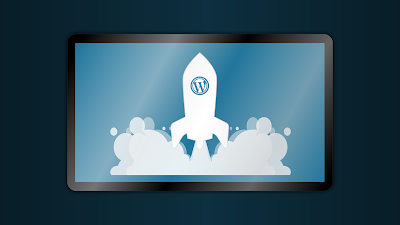Autoptimize plugin! This plugin will optimize your website’s files, making them smaller and easier for visitors to download. The end result is a faster-loading website that is more stable and performs better when there is a burst of traffic.
How to install Autoptimize
Installing Autoptimize is simple!
Installing Autoptimize is simple!
1. Log into the WordPress administration section
2. Use the left-hand navigation to select Plugins > Add new
3. In the Search field on the upper right corner, type “autoptimize”. Autoptimze will be the first result listed. Click on the Install Now button.
4. Once the plugin has finished installing, click the Activate button.
Now configuration
How to configure Configuring Autoptimize
Once you have activated the plugin, you will notice a couple of additions to WordPress. There will be a new Autoptimize menu item on the top of the screen. You can click on the title of the menu to go to the Autoptimize settings page. You can also get to the Autoptimize settings page by using the Settings > Autoptimize menu item.
Once you have activated the plugin, you will notice a couple of additions to WordPress. There will be a new Autoptimize menu item on the top of the screen. You can click on the title of the menu to go to the Autoptimize settings page. You can also get to the Autoptimize settings page by using the Settings > Autoptimize menu item.
Once you reach the Autoptimize settings page, you will probably be shocked by how simple it looks! There are two ways to use it:
Basic settings mode: You simply tick the box of the options you want to use. You can ask it to optimise your site’s HTML, Javascript and CSS. You can also add details of your content delivery network.
Advanced settings mode: You will also be shown additional settings for each option.
Let’s click Show Advanced Settings and jump into the deep end!
Advanced settings mode: You will also be shown additional settings for each option.
Let’s click Show Advanced Settings and jump into the deep end!
This is deep ... agar chahiye to pdho otherwise rhne do ....
HTML Options
This HTML options section only has two items to choose from:
Optimise HTML: Check the box to optimise HTML. It will minify the HTML, removing white space and unnecessary characters.
Keep HTML comments?: You can opt to keep comments in place.
Keep HTML comments?: You can opt to keep comments in place.
Javascript Options
JavaScript Settings Autoptimize Plugin
The javascript options are slightly more complex:
Optimise javascript code?: Enable or disable Autoptimize for javascript.
Force Javascript in?: If you have some issues with javascript components failing to work correctly, try this option. It will load the javascript early on, which can resolve common problems with page rendering.
Also aggregate inline JS?: Some WordPress themes have inline Javascript which is located throughout HTML files. You can pull this javascript out and combine it into a single file, which improves page speed. Use this option with caution, because it can cause the Autoptimize cache to become large very quickly.
Also aggregate inline JS?: Some WordPress themes have inline Javascript which is located throughout HTML files. You can pull this javascript out and combine it into a single file, which improves page speed. Use this option with caution, because it can cause the Autoptimize cache to become large very quickly.
Exclude scripts from Autoptimize?: You may encounter a script that does not work correctly after Autoptimize has minified or aggregated it. If you have a malfunctioning script exclude it from Autoptimize here.
Add try-catch wrapping?: If a JS error is preventing your pages from working correctly, check this option. It will “catch” any errors before they can stop the page rendering.
Add try-catch wrapping?: If a JS error is preventing your pages from working correctly, check this option. It will “catch” any errors before they can stop the page rendering.
CSS Options Autoptimize Plugin
There are quite a few CSS options:
Optimise CSS Code?: Enable or disable Autoptimize for CSS.
Generate data: URIs for images?: This option lets you encode small images into your CSS files instead of having more server calls to download individual images.
Generate data: URIs for images?: This option lets you encode small images into your CSS files instead of having more server calls to download individual images.
Remove Google fonts?: If you don’t use Google fonts in your theme, uncheck this box.
Also aggregate inline CSS?: The option removes CSS from your HTML and aggregates it. Useful if your theme has CSS throughout many pages.
Also aggregate inline CSS?: The option removes CSS from your HTML and aggregates it. Useful if your theme has CSS throughout many pages.
Inline and Defer CSS?: This option allows you to put some CSS in the HTML file if it is required to load the page. Other CSS is deferred and loaded afterwards.
Inline all CSS?: This option can work well for low traffic websites.
Exclude CSS from Autoptimize: A list of CSS files Autoptimize shouldn’t touch.
CDN Settings Autoptimize Plugin
If you are using a Content Delivery Network for some files, add its details here.
Cache Info Autoptimize Plugin
This section gives you some information on your cache.
Misc Options
Misc Options Autoptimize Plugin
This section has an option for changing how aggregated files are handled by the web server (leave this by default unless your server cannot compress files). It also has an option for disabling Autoptimize for users who are authenticated.
Optimise More!
The Optimise More tab at the top of the Autoptimize settings page lists other useful and complementary plugins.
Additional Plugins Autoptimize Plugin
Clearing Your Cache
The Autoptimize cache is a very simple file cache. By default, files that are combined and minified are stored in the /wp-content/cache/autoptimize folder. You can empty this cache whenever you please by clicking the Delete Cache button highlighted in the image below.
Deleting Cache Autoptimize Plugin WordPress



